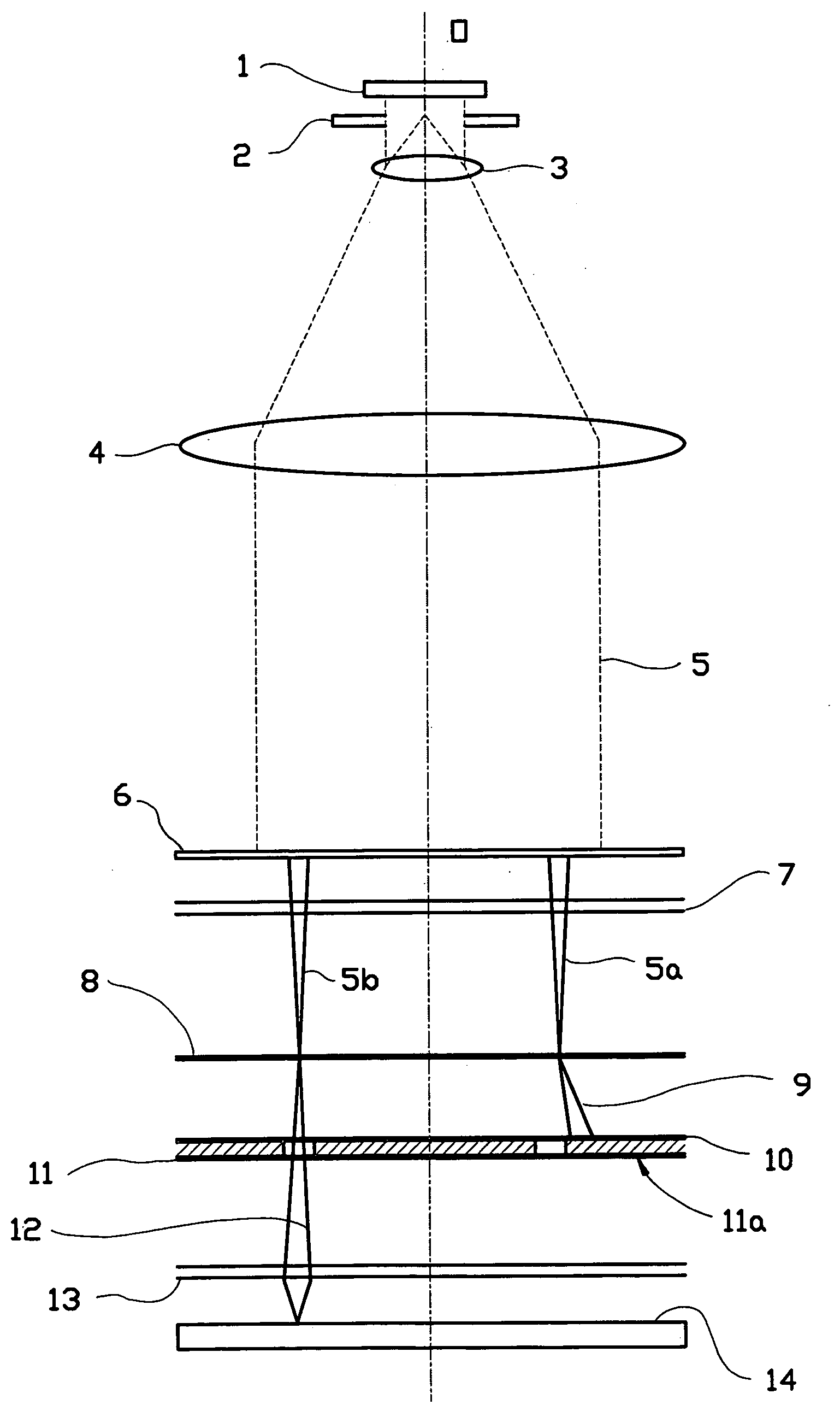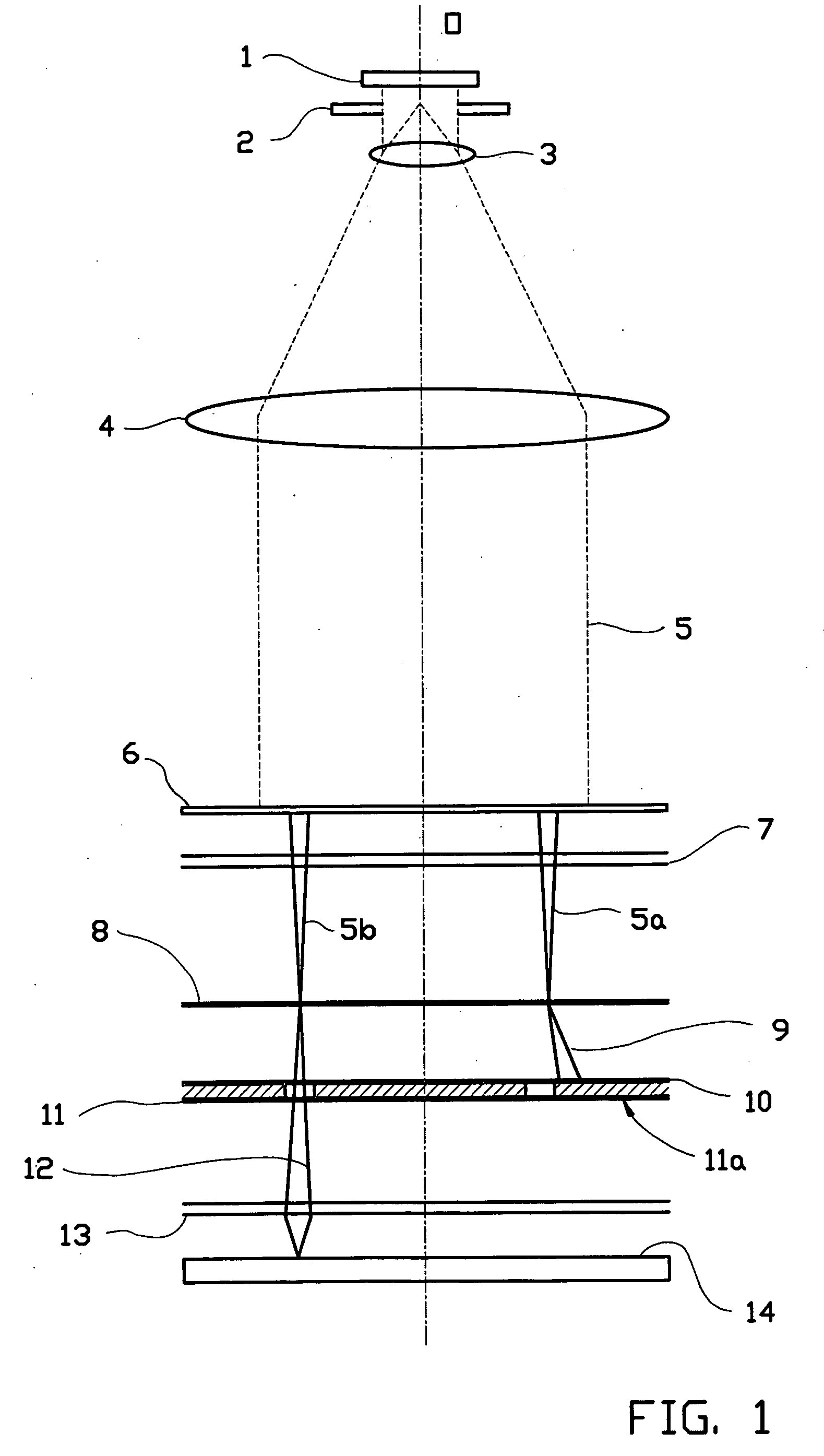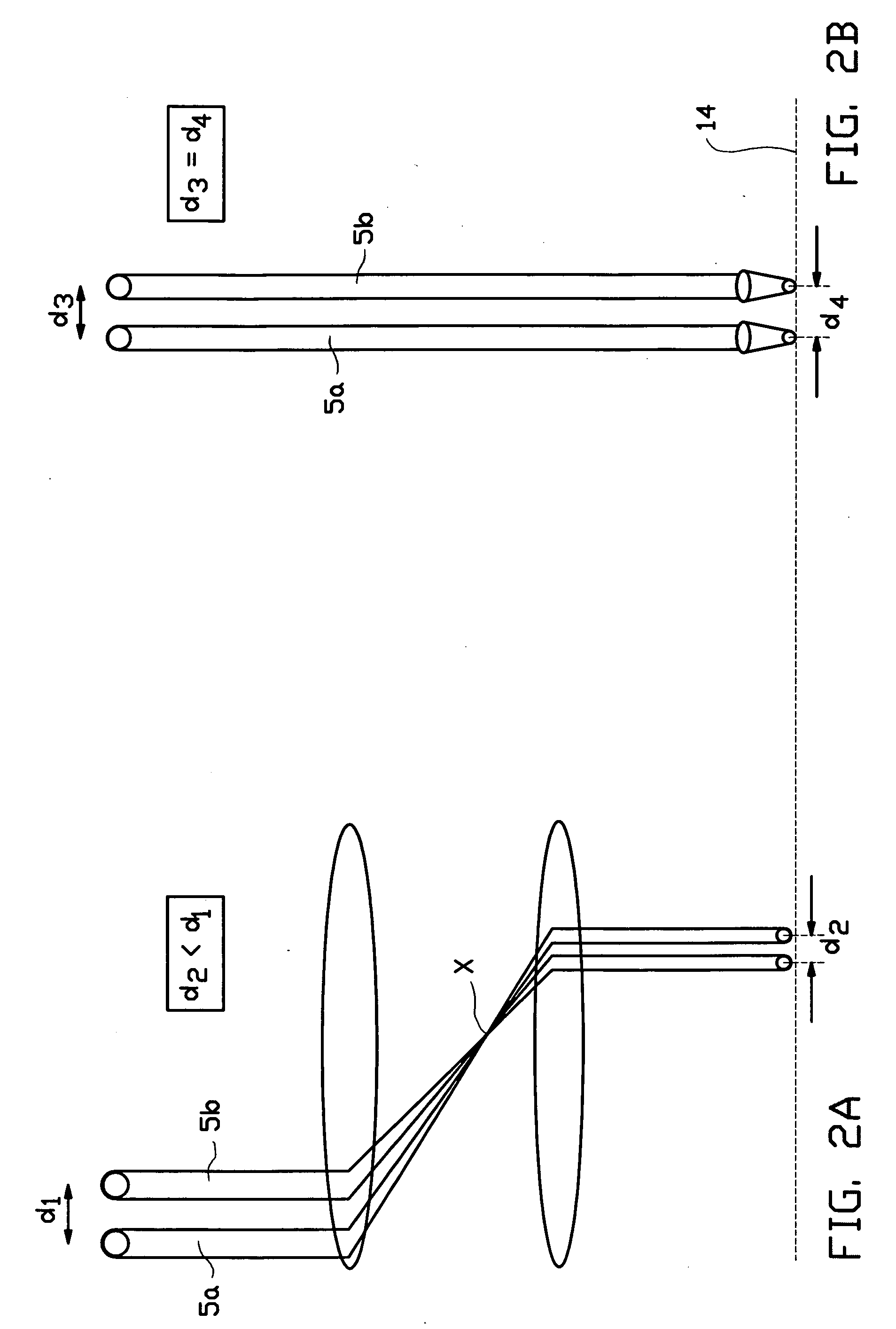Electron beam exposure system
a technology of electron beam and exposure system, which is applied in the field of electron beam exposure system, can solve the problems of correction value, homogeneity of beamlets, and limited system output, and achieve the effect of improving the performance of known electron beam exposure apparatus
- Summary
- Abstract
- Description
- Claims
- Application Information
AI Technical Summary
Benefits of technology
Problems solved by technology
Method used
Image
Examples
first embodiment
[0087] In a first embodiment, shown in FIG. 3, crossover in the illumination electron optics is avoided by using an electron source 1 with a spherical or a hemispherical outer surface 15. In this configuration a large opening angle α is formed, which reduces the blur due to electron-electron interactions in the emitted electron beam 5. Additionally the electron beams are forming a spherical wave front, which results in a virtual crossover 16 located in the centre of the source. There are no electrons present in the virtual crossover; so disturbing electron-electron interactions are absent.
[0088] The electrons can be extracted with a spherical extractor that comprises large holes. The main advantage of the spherical shape of the extractor is the more homogeneous field that is created.
[0089] In an alternative embodiment, shown in FIG. 3A, crossover is avoided by extracting the electrons from the source / cathode 1 which is at a voltage Vs and has a distant planar extractor 11. The plan...
second embodiment
[0103] In a second embodiment, the electrostatic scan deflectors 18 are located on the protective means.
[0104] The electrostatic scan deflectors 18 comprise scan deflection electrodes, which are arranged to deflect an assembly of electron beamlets in the same direction. The scan deflection electrodes may be deposited in the form of strips 19 on a suitable plate 20 at the target exposure surface side as is shown in FIG. 5A. The best yield can be established when the strips 19 are deposited close to the beamlet, thus close to the aperture 21, since this reduces db-sd. Moreover, it is preferable to position the scan deflection electrodes outside an individual beamlet crossover plane.
[0105] In one embodiment the first assembly is scanned in one direction while the next one is scanned in the opposite direction, by putting alternating voltages on the consecutive strips 19 as is shown in FIG. 5B. The first strip has for instance a positive potential, the second one a negative potential, t...
PUM
 Login to View More
Login to View More Abstract
Description
Claims
Application Information
 Login to View More
Login to View More - R&D
- Intellectual Property
- Life Sciences
- Materials
- Tech Scout
- Unparalleled Data Quality
- Higher Quality Content
- 60% Fewer Hallucinations
Browse by: Latest US Patents, China's latest patents, Technical Efficacy Thesaurus, Application Domain, Technology Topic, Popular Technical Reports.
© 2025 PatSnap. All rights reserved.Legal|Privacy policy|Modern Slavery Act Transparency Statement|Sitemap|About US| Contact US: help@patsnap.com



